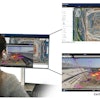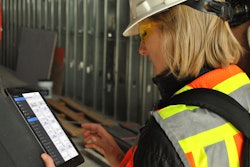
Whether an economic recession, a data security breach or a full-blown global pandemic, we’ve all seen how disruptions can impact business. From the loss of skilled professionals and profits to an inability to produce the end product, disruptions can be crippling for business owners trying to keep their doors open. Among the hardest hit during the COVID-19 pandemic, construction professionals are going all in on efforts to modernize and ensure their businesses can sustain operations during a crisis and recover quickly.
The need for quick communication and transfer of knowledge amid social distancing accelerated digital transformation for many construction businesses. Moving away from paper processes and disconnected systems to the cloud allowed contractors to operate with more agility and boost productivity, speed of delivery and profitability, as well as cut costs.
Most importantly, moving to the cloud enables a connected construction operation with data and collaborative communication flowing fluidly between the back office, field and extended project teams. This single source of truth improves how construction data is collected, stored and used, and unlocks the possibilities for analyzing data to improve business outcomes.
Putting Mountains of Data to Use
Although accelerated by the pandemic, the digital transformation in construction has been underway for decades. Manual forms of tracking project data have been replaced with automated, streamlined solutions, leading the amount of data captured in each job to grow exponentially. Today, larger infrastructure projects create an average of 130 million emails, 55 million documents and 12 million workflows - and that's just one project. Imagine gathering and analyzing an entire company’s data.
While data is no doubt the future of construction, it must be consistent, always up to date and flow freely between the office and the field. Thus, the ability to properly store and share real-time project information from a central location is critical.
Thankfully, contractors have those resources available to them today in the form of single-platform, all-in-one construction management solutions. These solutions integrate processes and workflows — accounting, project management, field management, HR management, equipment and material management, reporting and business intelligence and others — that were typically run with separate software solutions in the past. By creating a single source of shared data, these unified technologies allow contractors to leverage the cloud, mine the data for insights and truly work collaboratively in real time.
Data Analytic Tools for True Construction Intelligence
Advances in integrated, cloud-based construction software have made powerful analytic and business intelligence accessible to contractors. With self-service reporting features, these tools can often accomplish in minutes what has traditionally taken weeks or even months to pull together and required a variety of players, including back office staff, IT professionals, project managers and executives. Data analysis no longer requires a data scientist and today can be done by virtually anyone with just a few clicks. With this ability to easily analyze project data, contractors can:
- Improve jobsite processes and productivity: When data collection is streamlined, it can be analyzed to improve workflows, used to automate tasks, uncover efficiencies, cut costs and much more. True data analytics is more than just tracking traditional job costs and cash flow. For example, by analyzing data about employee movements (collected from wearables or smartphones), contractors can see how much extra movement takes place in the course of a day. This information can then be used to place materials and equipment in the most logical locations to cut down on movement and save time.
- Reduce risk and increase safety: Mismanaging risk related to safety, contracts, defects, costs and slowdowns reduces profit margins and puts construction businesses in legal jeopardy. By analyzing safety data and diving deeper into incidents over time, contractors can identify high-risk tasks and dangerous conditions to help prevent future incidents and reduce risk.
- Bid smarter and win more work: Closely tracking job costs, change orders, worker productivity and material and equipment usage from projects can lead to smarter bids and help better forecast future work and identify industry trends. While many companies already do some version of this, access to more complete and relevant data provides a comprehensive picture of how jobs fare and where improvements can be made, including the identification of long-term trends that can help with benchmarking. Analyzing historical data also ensures future project bids are more accurate, while the increased efficiencies and on-time, on-budget delivery of projects lead to a solid reputation, helping contractors land even more work.
Digital transformation opens the door to what contractors can do with the mountains of construction data their projects produce. Having the right solutions powering modern data workflows from the office to the field is future-proofing construction businesses and helping them become proactive rather than reactive.
About the author: Anne Hunt is the director of data and analytics at Viewpoint, a construction software leader. She leads the incubation and innovation of data-first services that are helping to revolutionize the construction industry. Previously she worked in the Trimble Transportation vertical where she led analytics initiatives and applied statistical theories of collecting, analyzing and interpreting quantitative data tools. Anne has a master’s in analytics from Villanova.


















